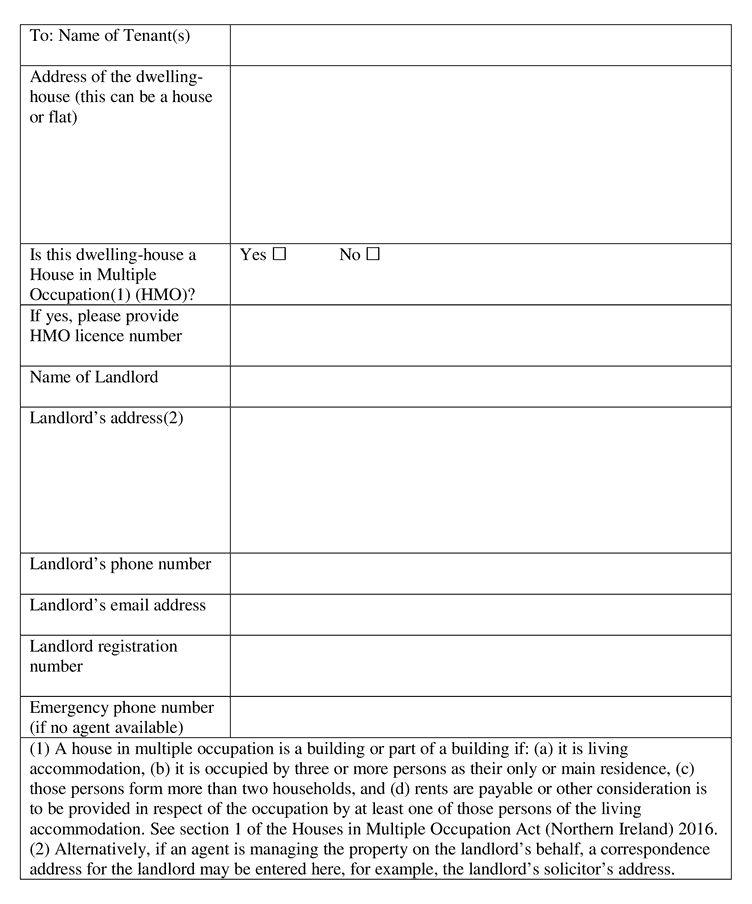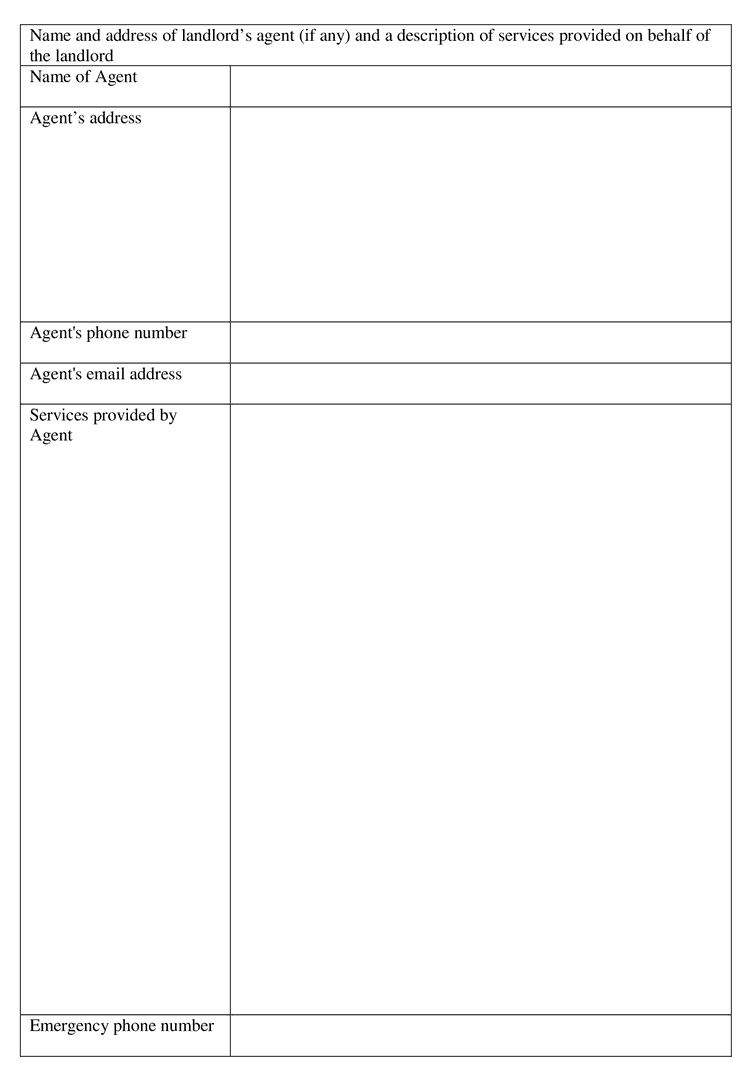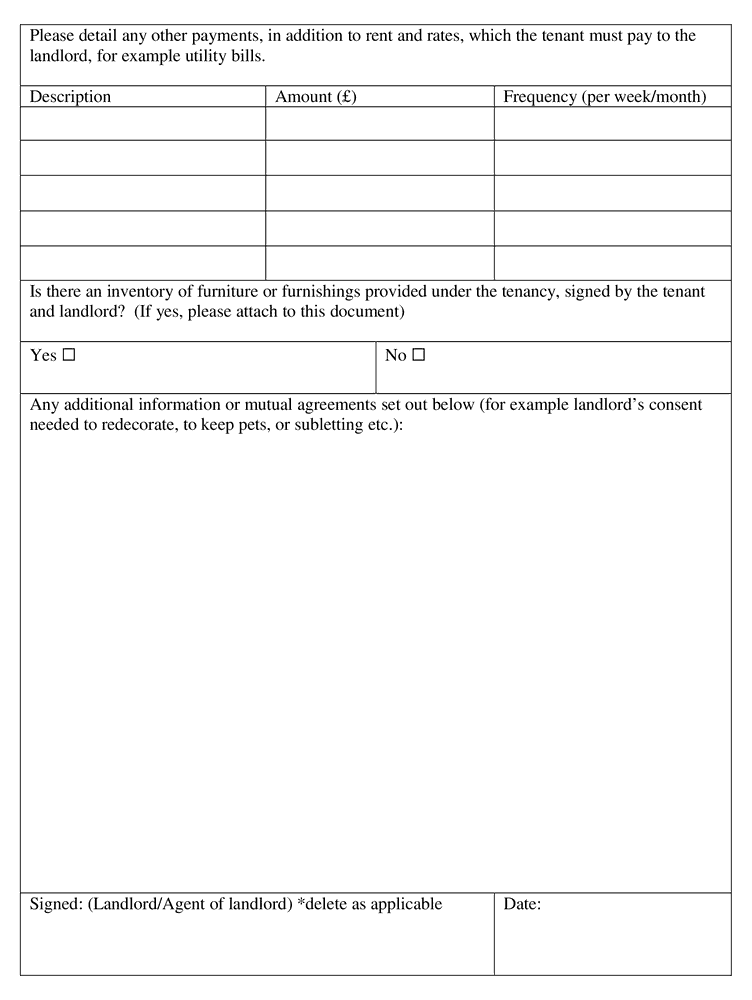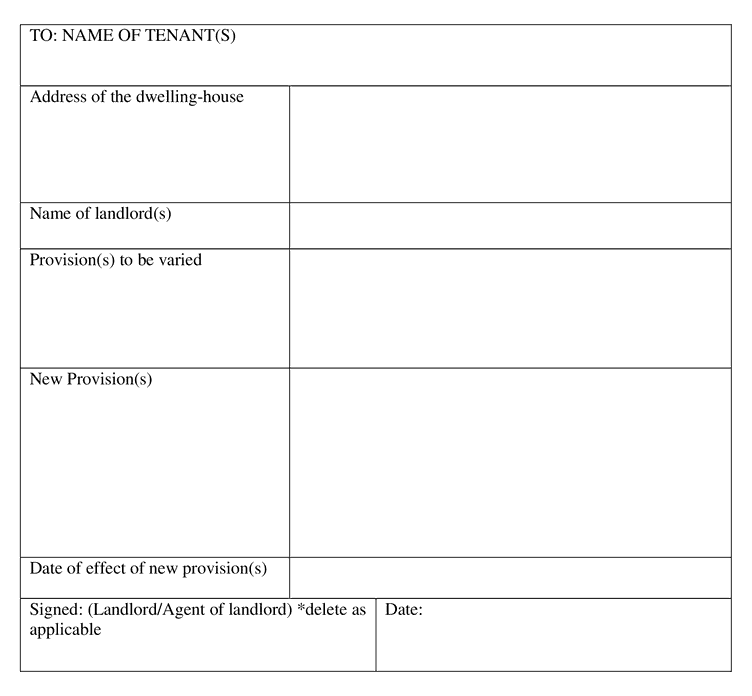- Latest available (Revised)
- Point in Time (01/04/2023)
- Original (As made)
The Tenancy Information Regulations (Northern Ireland) 2023
You are here:
- Previous
- Next
- Show Geographical Extent(e.g. England, Wales, Scotland and Northern Ireland)
- Show Timeline of Changes
More Resources
Changes over time for: The Tenancy Information Regulations (Northern Ireland) 2023
Alternative versions:
- 01/04/2023- Amendment
- 01/04/2023
Point in time
Status:
Point in time view as at 01/04/2023.
Changes to legislation:
There are currently no known outstanding effects for the The Tenancy Information Regulations (Northern Ireland) 2023.![]()
Changes to Legislation
Revised legislation carried on this site may not be fully up to date. At the current time any known changes or effects made by subsequent legislation have been applied to the text of the legislation you are viewing by the editorial team. Please see ‘Frequently Asked Questions’ for details regarding the timescales for which new effects are identified and recorded on this site.
Statutory Rules of Northern Ireland
2023 No. 19
Landlord And Tenant
The Tenancy Information Regulations (Northern Ireland) 2023
Made
16th February 2023
Coming into operation
1st April 2023
Citation, commencement and interpretationN.I.
1.—(1) These Regulations may be cited as the Tenancy Information Regulations (Northern Ireland) 2023 and come into operation on 1stApril 2023.
(2) In these Regulations-
“the Order” means the Private Tenancies (Northern Ireland) Order 2006;
“the Act” means the Private Tenancies Act (Northern Ireland) 2022.
Landlord’s notice relating to the granting of a private tenancyN.I.
2. A notice under Article 4A(2) of the Order and paragraph 1(2) of Schedule 1 to the Act shall be in the form set out in Schedule 1.
Landlord’s notice relating to the variation of a private tenancyN.I.
3. A notice under Article 4B(2) of the Order and paragraph 2(3) of Schedule 1 to the Act shall be in the form set out in Schedule 2.
Sealed with the Official Seal of the Department for Communities on 16th February 2023
(L.S.)
David Polley
A senior officer of the
Department for Communities
Regulation 2
SCHEDULE 1N.I.LANDLORD’S NOTICE RELATING TO THE GRANTING OF A PRIVATE TENANCY
Article 4A of the Private Tenancies (Northern Ireland) Order 2006 and Section 2 and Schedule 1 to the Private Tenancies Act (Northern Ireland) 2022.
This Notice must be given to the tenant free of charge and within 28 days of the granting of the tenancy.
NOTESN.I.
GeneralN.I.
1. Your tenancy is not a protected or statutory tenancy within the meaning of the Rent (Northern Ireland) Order 1978 as amended by Article 56 of the Private Tenancies (Northern Ireland) Order 2006. You have the protection of the legal rights described below. However, other terms and conditions of your tenancy are a matter for you and your landlord.
Commencement Information
I4Sch. 1 para. 1 in operation at 1.4.2023, see reg. 1(1)
RepairsN.I.
2. Your landlord is obliged to keep in repair all gas fittings, flues and installations. Your landlord must also provide you with a copy of the required safety checks in relation to gas appliances and flues. In some circumstances, your landlord may also display a copy of any safety certificate prominently in the property. Responsibility for other repairs is determined by your tenancy agreement. You can get help from the environmental health department of your local council if repairs are not carried out. See Appendix 1 (below) for more information.
Commencement Information
I5Sch. 1 para. 2 in operation at 1.4.2023, see reg. 1(1)
Access for repairsN.I.
3. By law, you must let your landlord (or their representatives or contractors) have reasonable access to the property to carry out repairs or an inspection. Your landlord should give you reasonable notice before this happens.
Commencement Information
I6Sch. 1 para. 3 in operation at 1.4.2023, see reg. 1(1)
Fitness for human habitationN.I.
4. Your landlord is responsible for ensuring your property is safe. If:
Your property was built before 1945, and
Your tenancy began on or after 2007, and
The property is not a prescribed dwelling-house, and
It has no current certificate of fitness then, you can ask your local council to inspect it to ensure it is fit for human habitation.
Where a rented property does not meet the fitness standard, it is subject to rent control through the Rent Officer for Northern Ireland.
Commencement Information
I7Sch. 1 para. 4 in operation at 1.4.2023, see reg. 1(1)
ReceiptsN.I.
5. All private tenants have a legal right to a receipt for any cash payment in relation to their tenancy. The receipt should detail:
The amount paid,
The date it was paid,
What the payment was for,
If an amount remains outstanding, the amount, or
If payment was made in full, that no amount remains outstanding.
You should get a receipt when you make the payment or as soon as reasonably possible afterwards. Your local council has powers to take legal action when this does not happen.
Commencement Information
I8Sch. 1 para. 5 in operation at 1.4.2023, see reg. 1(1)
Notice to QuitN.I.
6. To end a tenancy a written ‘Notice to Quit’ must be given by the landlord or you (the tenant), to the other party, except in the case of a fixed term tenancy, where it ends as agreed. The following tables show the minimum period of notice your landlord must give you, and you must give your landlord, depending on the length of the tenancy.
Minimum period of notice a landlord must give a tenant
| Length of Tenancy | Notice to Quit from landlord |
|---|---|
| Not more than 12 months | No less than 4 weeks’ written notice |
| More than 12 months but not more than 10 years | No less than 8 weeks’ written notice |
| More than 10 years | No less than 12 weeks’ written notice |
Minimum period of notice a tenant must give a landlord
| Length of Tenancy | Notice to Quit from tenant |
|---|---|
| Not more than 10 years | No less than 4 weeks’ written notice |
| More than 10 years | No less than 12 weeks’ written notice |
Commencement Information
I9Sch. 1 para. 6 in operation at 1.4.2023, see reg. 1(1)
Illegal eviction and harassmentN.I.
7. Your landlord, or anyone acting on their behalf, is not allowed to harass you or your household to try to make you leave or illegally evict you. This could include:
Entering your home without permission, unless in an emergency,
Removing your belongings, or
Cutting off essential services, such as water or electricity.
Your local council has powers to take legal action if this happens.
Commencement Information
I10Sch. 1 para. 7 in operation at 1.4.2023, see reg. 1(1)
Legal process for evictionN.I.
8. You cannot be evicted from your property until your landlord follows the correct legal process and gets a possession order from the Court. However, you may be liable for legal costs incurred if a possession order is issued.
Commencement Information
I11Sch. 1 para. 8 in operation at 1.4.2023, see reg. 1(1)
Help with paying rent and ratesN.I.
9. You are entitled to apply for help with paying your rent and rates.
You may be able to get help with your housing costs through Universal Credit. Universal Credit is a social security benefit paid by the Department for Communities. You can make a claim online (universal-credit.service.gov.uk).
If you are having difficulty with paying your rent, you may be able to get a Discretionary Housing Payment. More information is available from nihe.gov.uk.
If you need help with rates, you can apply for this through the Rate Rebate Scheme. For information on this see the NI Direct website (nidirect.gov).
Some tenants are eligible to get Housing Benefit, a social security benefit paid by the Housing Executive.
For further information contact your local Jobs and Benefits office or Housing Executive office.
Commencement Information
I12Sch. 1 para. 9 in operation at 1.4.2023, see reg. 1(1)
Further adviceN.I.
10. If you need independent advice or help with any problems you are having in relation to your tenancy, contact either:
Your local council’s environmental health department,
Housing Rights, phone: 028 9024 5640,
Advice NI, phone: 0800 915 4604, or
A Solicitor.
Commencement Information
I13Sch. 1 para. 10 in operation at 1.4.2023, see reg. 1(1)
Appendix 1 – RepairsN.I.
A landlord and tenant can agree to divide responsibility for repairs as they wish, except for gas appliances and furniture safety, which are the responsibility of the landlord.
However, where a tenancy began after 1st April 2007 and where there is not a clear division of responsibility for repairs, the law imposes what are known as ‘default terms’.
This means that if a tenancy agreement either does not refer to repairing responsibilities, or does not describe these in enough detail, the following will apply:
The landlord is responsible for:
Repairing the structure and exterior of the property, including exterior paintwork, drains, gutters and pipes,
Repairing the interior of the property other than matters covered under tenant responsibilities (see below),
Repairing any installations for the supply and use of water, gas, electricity and sanitation including baths, sinks, wash-hand basins and toilets,
Repairing any appliances provided by the landlord,
Repairing any installations for heating and water heating,
Any fixtures, fittings and furnishings provided by the landlord,
Keeping in good repair any common areas or areas required for access, and
Keeping any area required for access adequately lit and safe to use.
The tenant is responsible for:
Taking proper care of the property as a good tenant,
Fixing any damage caused by tenants, household members or guests,
Keeping the interior in reasonable decorative order, and
Not altering the property without the landlord’s permission.
Responsibility for other repairs depends on what the landlord and tenant agree themselves.
A landlord is not responsible for maintaining gas appliances which the tenant will take with them at the end of the tenancy.
Commencement Information
I14Sch. 1 Appendix 1 in operation at 1.4.2023, see reg. 1(1)
Regulation 3
SCHEDULE 2N.I.LANDLORD’S NOTICE RELATING TO THE VARIATION OF A PRIVATE TENANCY
Article 4B of the Private Tenancies (Northern Ireland) Order 2006 and Section 2 and Schedule 1 to the Private Tenancies Act (Northern Ireland) 2022.
This Notice must be given to the tenant free of charge and within 28 days of the date of the variation.
EXPLANATORY NOTE
(This note is not part of the Regulations)
These Regulations set out the form of notice and information a landlord must give a tenant relating to the granting of a tenancy and any variation of that tenancy, within 28 days of such granting or such variation.
Regulation 1 relates to citation, commencement and interpretation.
Regulation 2 prescribes the form of notice to be given to a tenant by a landlord relating to the granting of a private tenancy.
Regulation 3 prescribes the form of notice to be given to a tenant by a landlord relating to the variation of a private tenancy.
Schedule 1 sets out the particulars and information to be contained in a landlord’s notice relating to the granting of a private tenancy.
Schedule 2 sets out the information to be contained in a landlord’s notice relating to the variation of a private tenancy.
The Department for Social Development was renamed the Department for Communities in accordance with section 1(7) of the Departments Act (Northern Ireland) 2016 (2016 c.5 (N.I.))
Options/Help
Print Options
PrintThe Whole Rule
Legislation is available in different versions:
Latest Available (revised):The latest available updated version of the legislation incorporating changes made by subsequent legislation and applied by our editorial team. Changes we have not yet applied to the text, can be found in the ‘Changes to Legislation’ area.
Original (As Enacted or Made): The original version of the legislation as it stood when it was enacted or made. No changes have been applied to the text.
Point in Time: This becomes available after navigating to view revised legislation as it stood at a certain point in time via Advanced Features > Show Timeline of Changes or via a point in time advanced search.
See additional information alongside the content
Geographical Extent: Indicates the geographical area that this provision applies to. For further information see ‘Frequently Asked Questions’.
Show Timeline of Changes: See how this legislation has or could change over time. Turning this feature on will show extra navigation options to go to these specific points in time. Return to the latest available version by using the controls above in the What Version box.
Explanatory Memorandum
Explanatory Memorandum sets out a brief statement of the purpose of a Statutory Rule and provides information about its policy objective and policy implications. They aim to make the Statutory Rule accessible to readers who are not legally qualified and accompany any Northern Ireland Statutory Rule or Draft Northern Ireland Statutory Rule laid before the UK Parliament during the suspension of the Northern Ireland Assembly.
More Resources
Access essential accompanying documents and information for this legislation item from this tab. Dependent on the legislation item being viewed this may include:
- the original print PDF of the as enacted version that was used for the print copy
- lists of changes made by and/or affecting this legislation item
- confers power and blanket amendment details
- all formats of all associated documents
- correction slips
- links to related legislation and further information resources
Timeline of Changes
This timeline shows the different points in time where a change occurred. The dates will coincide with the earliest date on which the change (e.g an insertion, a repeal or a substitution) that was applied came into force. The first date in the timeline will usually be the earliest date when the provision came into force. In some cases the first date is 01/02/1991 (or for Northern Ireland legislation 01/01/2006). This date is our basedate. No versions before this date are available. For further information see the Editorial Practice Guide and Glossary under Help.
More Resources
Use this menu to access essential accompanying documents and information for this legislation item. Dependent on the legislation item being viewed this may include:
- the original print PDF of the as made version that was used for the print copy
- correction slips
Click 'View More' or select 'More Resources' tab for additional information including:
- lists of changes made by and/or affecting this legislation item
- confers power and blanket amendment details
- all formats of all associated documents
- links to related legislation and further information resources





